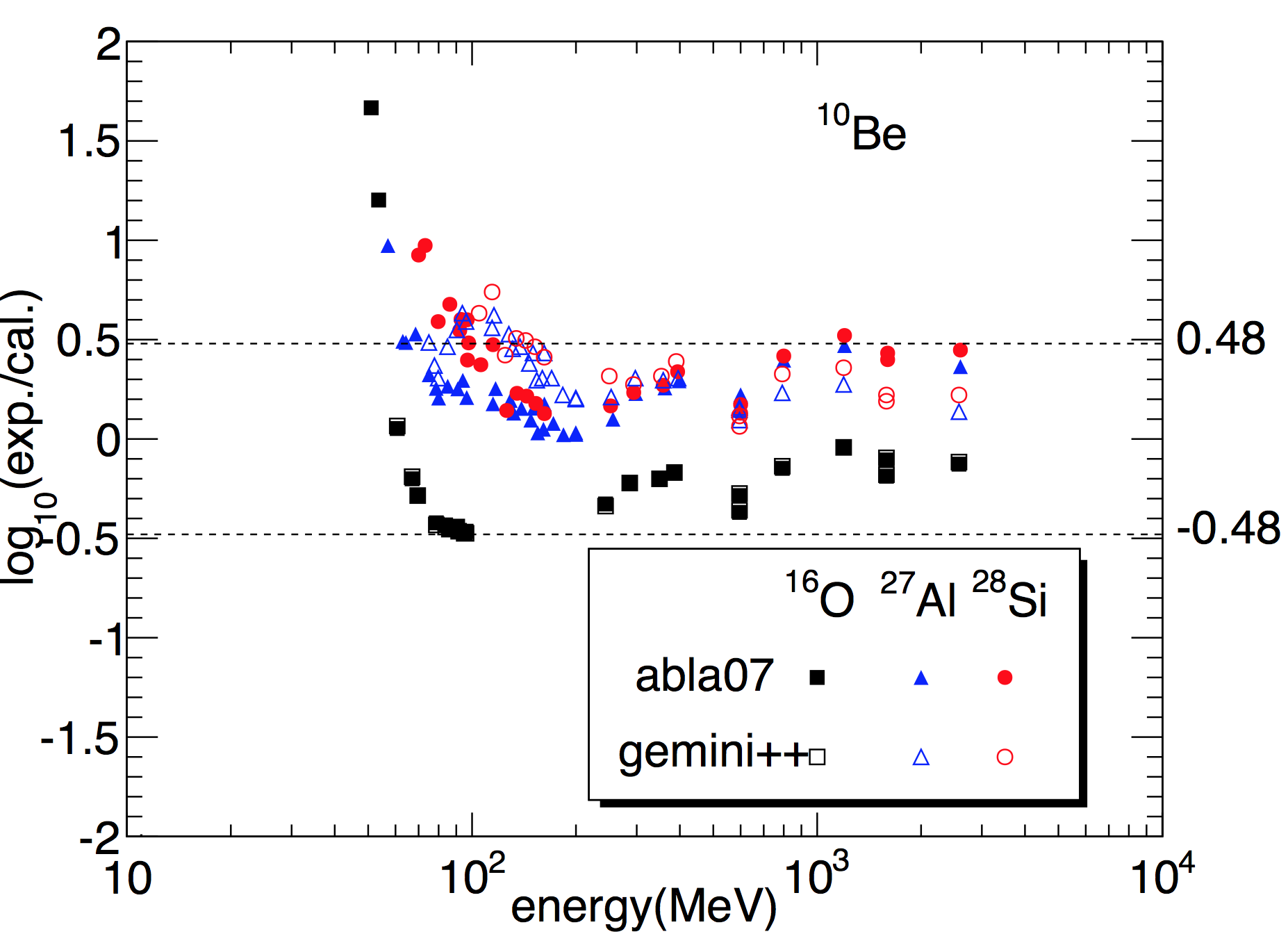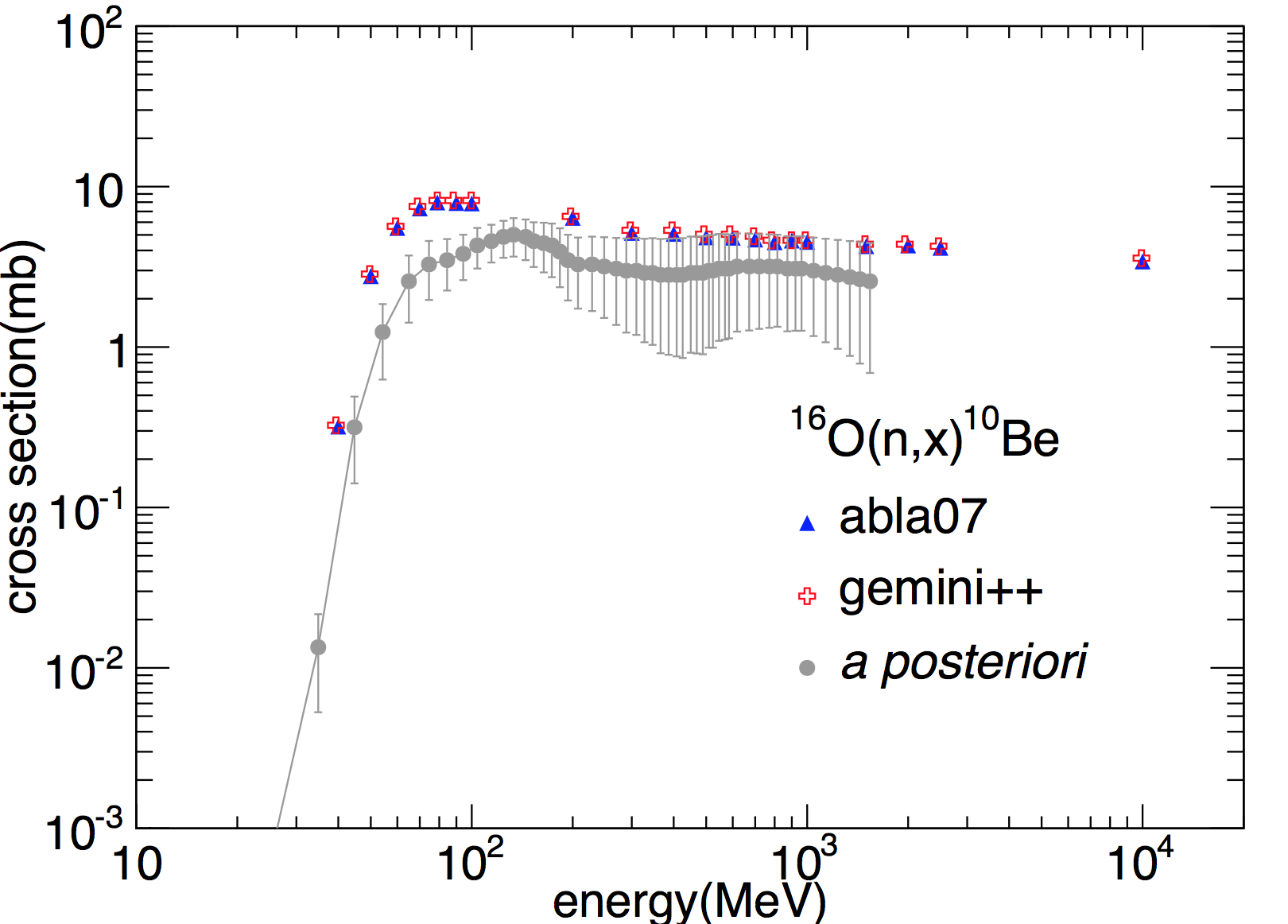High energy protons and neutrons can interact with heavy nuclei and produce secondary nuclei. The production cross sections of secondary nuclei play great roles in high energy astrophysics, meteoritics, lunar science, and cosmic ray physics. Most Li, Be, B in the galactic cosmic rays are generated by these reactions. The secondary/primary ratio, such as B/C, can be used to trace the transport history of cosmic rays. When cosmic ray protons bombard the surface of the Moon and meteorite, these reactions will occur, and the secondary nuclei are called cosmogenic nuclei. The depth profile of cosmogenic nuclei can provide important information about the evolution history of these extraterrestrial bodies. However, due to the experimental difficulties, the cross sections for proton induced reactions are not sufficient. The status for neutron induced reactions are much worse. It is because the neutrons are radioactive and neutral, hence it can not be accelerated in accelerators. At present, the high energy neutron cross sections are obtained by indirect ways. Recently, Associate Researcher of Purple Mountain Observatory Tiekuang Dong and his collaborators simulated the proton and neutron induced reactions to obtain the cross sections by combining the intra-nuclear cascade collision model and nuclear de-excitation models. The simulated results are consistent with the newly compiled experimental data. Fig.1 shows the ratio of simulated to experimental cross sections as a function of incident energy of proton. In this figure abla07 and gemini++ are two de-excitation models. It is clear that, theoretical results agree with experimental ones quite well. Fig.2 shows the cross sections for the reaction of neutron against 16O to produce 10Be. One can see that theoretical and experimental data also agree with each other very well. 
Fig.1:The ratio of simulated cross sections to experimental data for proton induced reactions against 16O、27Al、28Si to produce 10Be. 
Fig.2:The cross sections of neutron induced reaction against 16O to produce 10Be。 This work shows that it is feasible to simulate the cross sections for high energy nuclear reactions on the computer and points the direction of the improvement about the physical model in the future. It can be expected that once the physical model is calibrated using existing experimental data, computer simulation can be done widely for unknown reactions. In other words, computer simulation can replace at least partly the expensive high energy nuclear reaction experiments on the accelerators. This work is supported by the National Natural Science Foundation of China, the paper has been published on Physical Review C (please refer to http://dx.doi.org/10.1103/PhysRevC.93.064608) (Information Source: Purple Mountain Observatory, CAS) |

